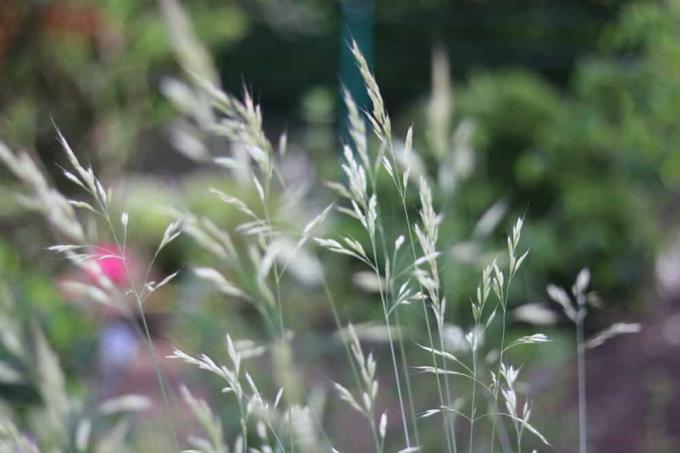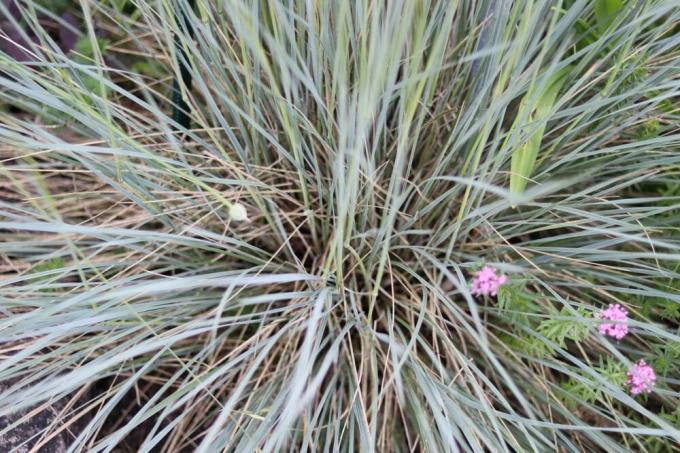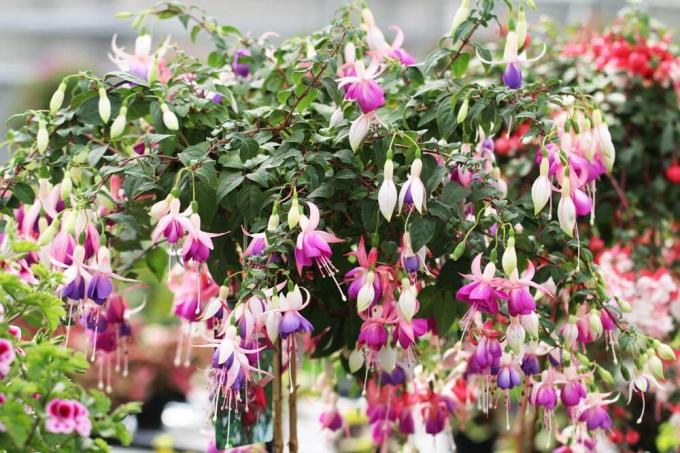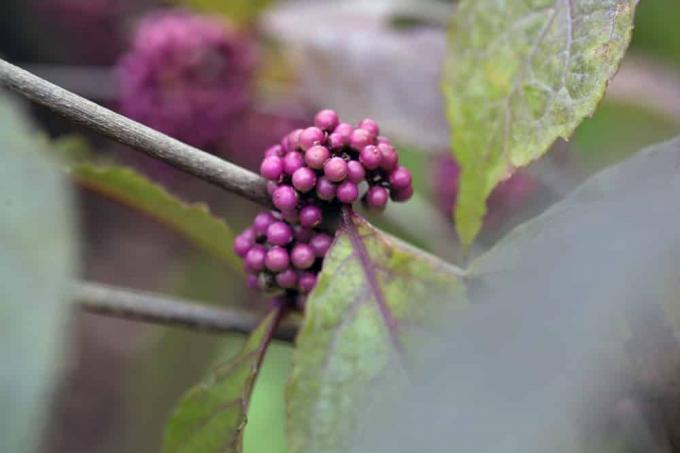

Table of contents
- substrate and soil
- Location
- Plant
- watering and fertilizing
- multiply
- hibernate
- diseases and pests
- Conclusion
With the blue-ray oat (Helictotrichon sempervirens), also blue-ray meadow oat, you get an impressive evergreen beauty in the garden, which you can enjoy all year round, because this type of grass is evergreen and has intense blue-grey shades Leaves. With the flowering period from July to the end of August, it supports the flowering perennials with imposing yellowish flowers, the stalks of which are over a meter high. As a sun worshiper, it can also be placed in full sun and requires little maintenance. Here we give you helpful tips on how you can easily cultivate the adaptable plant in your perennial border.
substrate and soil
Well-drained, gravelly soil is ideal, because it does not tolerate waterlogging under any circumstances. This applies equally to summer and winter. It is advisable to mix some gravel and sand into the excavation when planting, this creates natural drainage. The blue-rayed oat belongs to the dry and steppe plants, it rarely competes Nutrients or water to other perennials and can be excellently combined with many plants. The frugal plant may get some compost or some horn shavings in the excavation, this also ensures the supply of food. Blue-ray oats are available all year round and can also be planted at any time. Usually, however, planting should take place in spring or autumn. After the excavation has been filled and trodden down, it should be watered moderately.
- dig the planting hole about twice as wide and deep as the rootstock is large
- If you enrich the excavation with gravel or untreated potsherds, the soil remains permeable
Location
The blue-ray oat is a sun worshiper and grows best in locations that grant it this sun. This means that it can be cultivated in places that are otherwise considered problem locations, because many plants are burned in the blazing sun. Due to its frugality, it can be placed on south-facing slopes, and sun beds or stone beds are also gratefully accepted. In these places there is no danger of getting permanently wet roots. The wrong location can cause the plant to become stunted or susceptible to fungal diseases, so care should be taken when choosing. In combination with plants that have similar requirements, however, it develops splendidly. Over time, the host can become wide, note that other plants are not too close together, or separate the perennial in time.
- place the grass to loosen up or as a specimen plant in rock or steppe beds
- Blue-ray oats can be planted well on a sloping embankment
- it really comes into its own in combination with lavender, sage or catnip
- can also be used for roof greening
- good companion for rose bushes because it does not compete
- can be planted in small groups of 3-4 plants
- put no more than 3 plants per square meter
- definitely don't mulch
Plant

The blue-ray oat is delivered as a perennial plant with a rootstock. Additional breeds such as "Saphirsprudel" or "Pendula" are commercially available as hanging blue-ray oats. When buying, make sure that there is good rooting without already cracking the pot. If you want to cultivate the beautiful, evergreen plant as a solitary plant, you should try to buy slightly larger young plants. So that the prepared and kept free space does not appear bare, annuals can be excellently planted Add quivering grass, which can easily give way as soon as the blue-ray oat host moves on spreads. When planting with other perennials or in small groups, a planting distance of around 60 cm, whereby a single planting in combination with other dry grasses is preferred can. Blue-ray oat can also be cultivated in a bucket on the terrace. Since it is hardy, it does not need special protection from frost.
- A garden fleece can be placed in the tub if the temperature is severely below zero
- the young plants can be placed well in the rock garden, they adapt
- sandy soil is considered to be well tolerated because it is permeable to water
- Cut off flower stalks after flowering to strengthen the plant itself
- the host itself or the leaves should not be pruned, they also serve as frost protection and remain steel blue even in winter
watering and fertilizing
The frugal plant does not make high demands, and regular fertilization is not necessary. As a dry and steppe plant, the blue-ray oat does not require time-consuming watering even in dry phases. A little compost once a year is sufficient as fertilizer, but mineral fertilizers should be avoided for dry grass.
Tip:
If you do want or have to water, use a watering can with a spray nozzle to distribute the water evenly. Water in the evening to prevent sunburn from water droplets. Water moderately.
multiply
Like all perennials, the blue ray oat can be propagated by dividing the rootstock or by sowing the ripe, dry seeds. For the division, the mother plant is dug up and the rootstock divided with a spade or a very sharp knife. The mother plant goes back into the ground. This procedure is also recommended if the plant is already very large. Due to the rejuvenation, it grows better again the following year. The separated young plant is placed in its new location and treated like a normal new dry grass perennial. For propagation by seed propagation, the fully ripe seeds can be collected from the plant in August. In the seed pot, 3-5 seeds are placed in moist sand. The nursery pot should be covered with foil and opened at least once a day to prevent mold growth. The location should be bright and sunny. The first plants can appear after two to three weeks. As soon as they have reached a size of 8 to 10 cm, they can be placed outside.
Tip:
If you plant two or three seed pots at the same time, there is a greater chance that enough young plants will grow.
hibernate
The perennial blue ray oat is hardy and does not need any special precautions for the winter. Like most types of grass, it survives frost and snow quite well as long as there is no waterlogging. Therefore, when planting, care must be taken to ensure that no moisture can remain in the soil, even in heavy rain and meltwater.
diseases and pests

The easy-care, adaptable plant is not sensitive to diseases and pests. However, if the vegetation is too dense, fungal diseases can appear that quickly spread to other plants or are transmitted by them. Then a remedy must be found quickly. For this purpose, the affected areas should be generously thinned out. In most cases this will be sufficient, chemical treatment is hardly necessary. Due to its robust structure, the blue-ray oat will already grow extensively again the following year.
Conclusion
Grass perennials are beautiful, the blue oat is particularly beautiful and should not be missing in any perennial border. As an easy-care plant, also for problem areas, it can be placed in the blazing sun, in rock gardens, as well as on embankments and will there with its striking blue foliage is a pleasing sight all year round, an undemanding plant that will last for many years in optimal placement grows.
 garden editorial
garden editorial I write about everything that interests me in my garden.
Learn more about perennial plants

These 15 Flowers Are Hardy & Perennial | bedding plants
Unlike annual flowering plants, perennials come back every year. They stay in one place for many years and play a major role in garden design. Some varieties get through the winter without any problems. We introduce you to 15 hardy perennials.

Cutting & Propagating Cranesbill | 7 Tips for Geranium
As a rule, cranesbills do not necessarily have to be cut. A cut stimulates a second flowering in some species. Other species need a pruning for rejuvenation. With geranium, it always depends on the species. This also applies to propagation.

21 hardy, perennial and flowering plants for balconies and tubs
A beautifully planted balcony is not only a feast for the eyes, but often also a lot of work. This is especially true if you want to enjoy colorful blooms all summer long. Repotting is the order of the day every few weeks.

Sweet William, Dianthus barbatus | 14 tips for care, sowing & overwintering
The decision for carnations is spot on. Like hardly any other plant, they guarantee colorful flowers in abundance. Demanding care requirements are alien to them, which is why we don't have to struggle with work. Sow and just wait, that's almost all.

Lantana, Lantana camara - location, care and propagation
The fascinating play of colors of the lantana appears as if transformed by magic; the popular garden flower, which blooms between May and October, is capable of changing its bloom color! However, optimal care is important so that hobby gardeners can observe the wondrous color change of the lushly blooming rosette.

Beauty fruit varieties and care tips
The beauty fruit is an easy-care shrub, which can grow a few meters in height and enchants with violet fruits. The plant and its various varieties are well suited to local site conditions, but are sensitive to temperatures that are too cold. Therefore, young plants in particular need additional winter protection.
